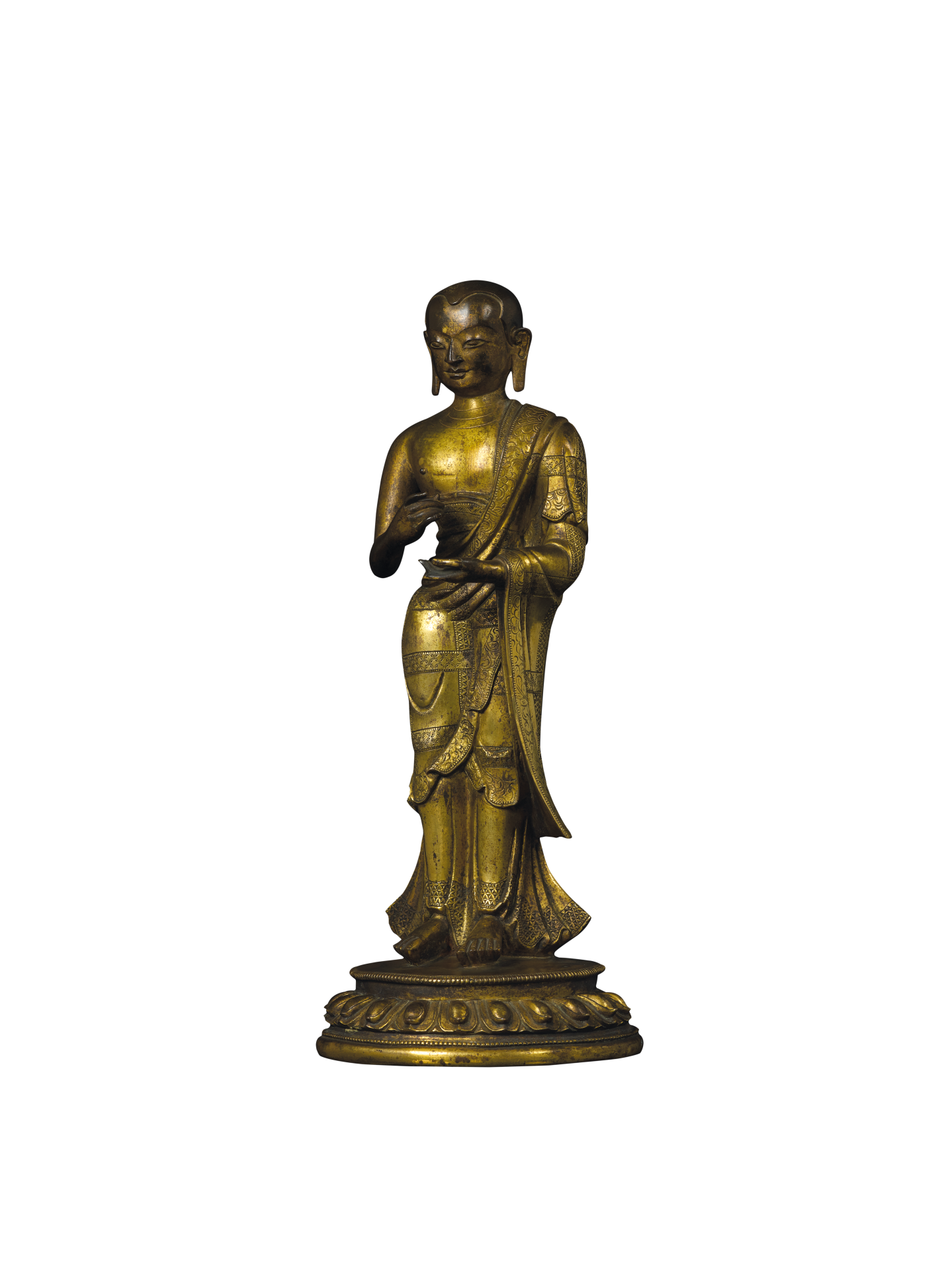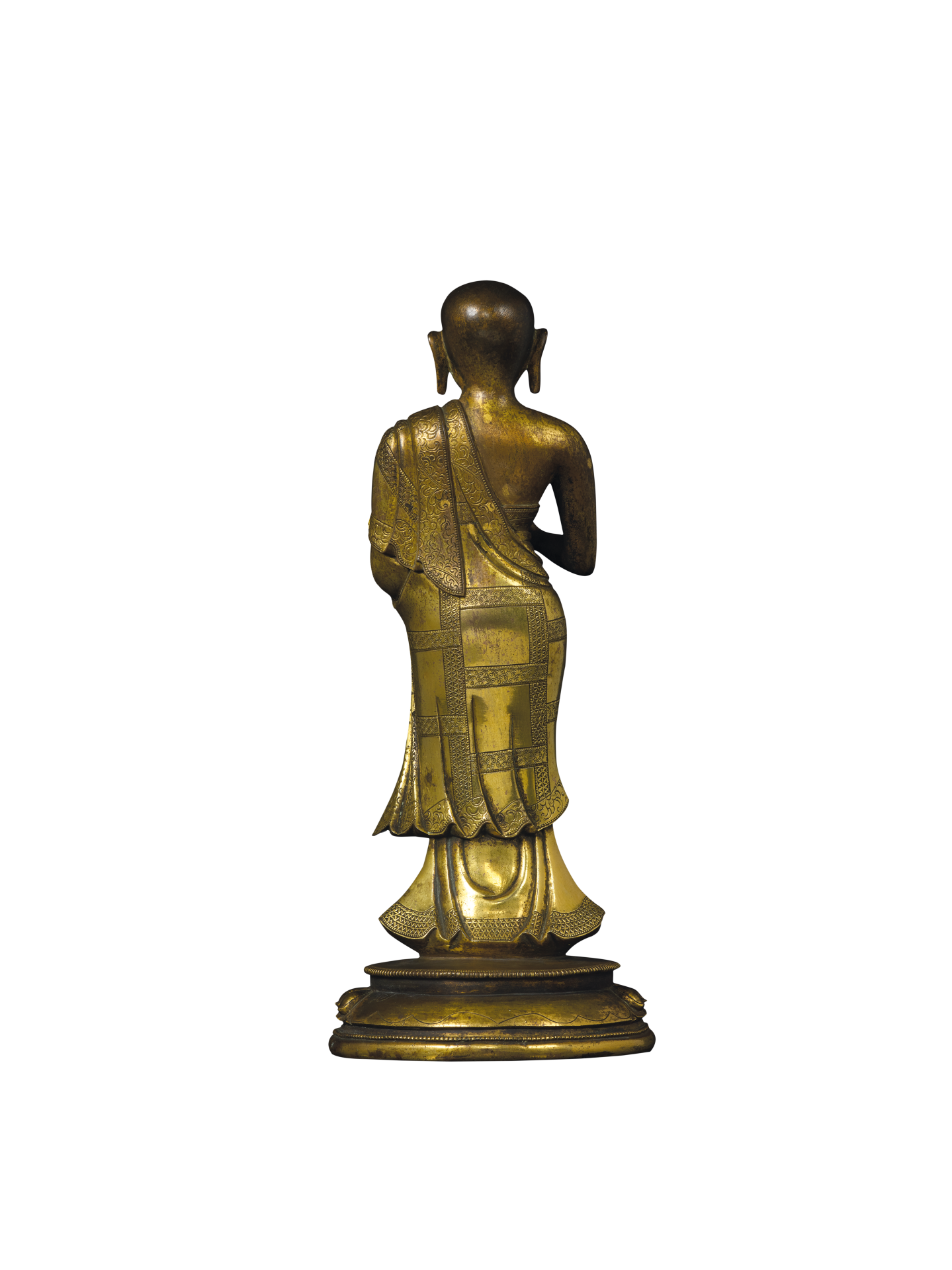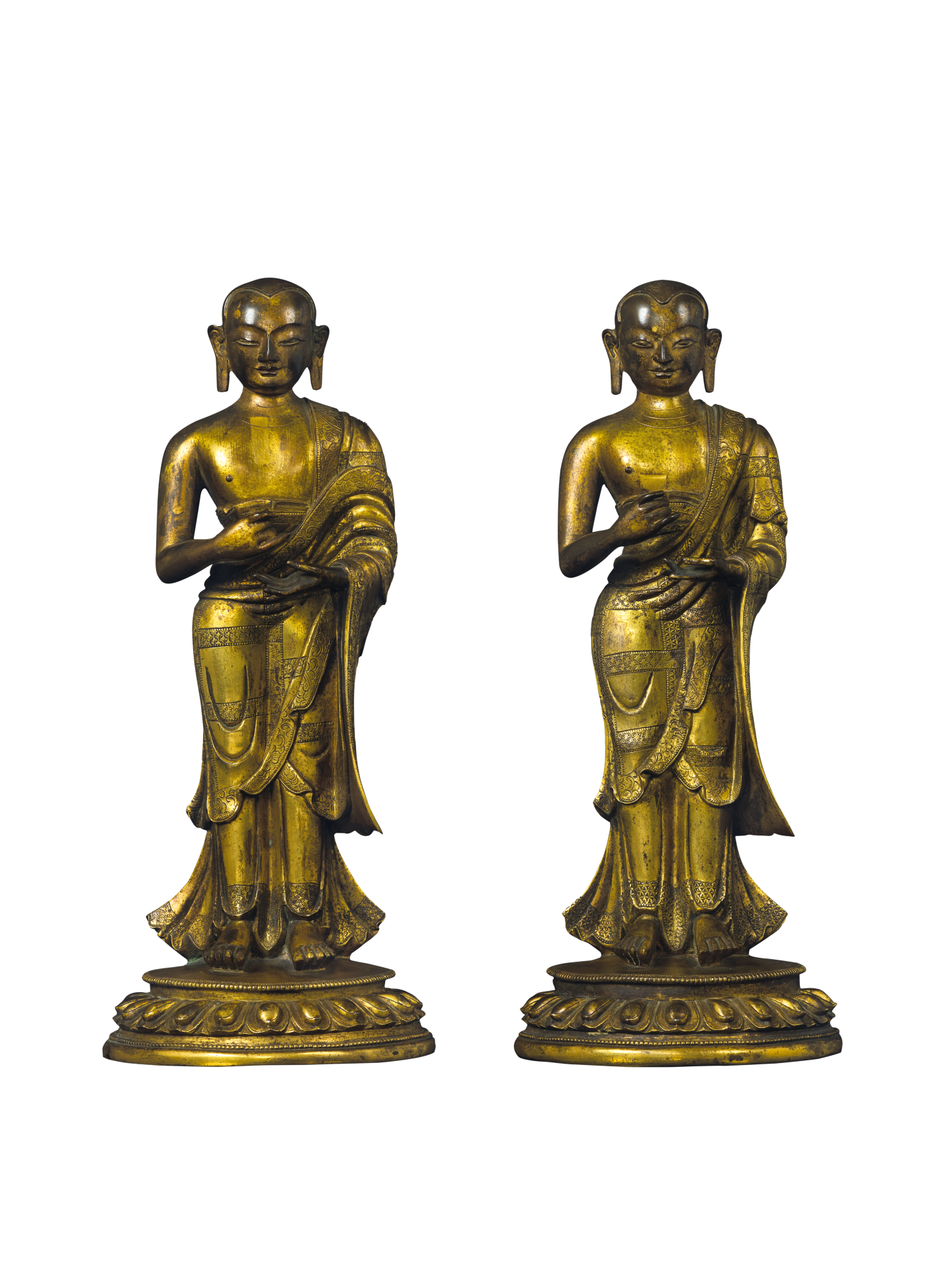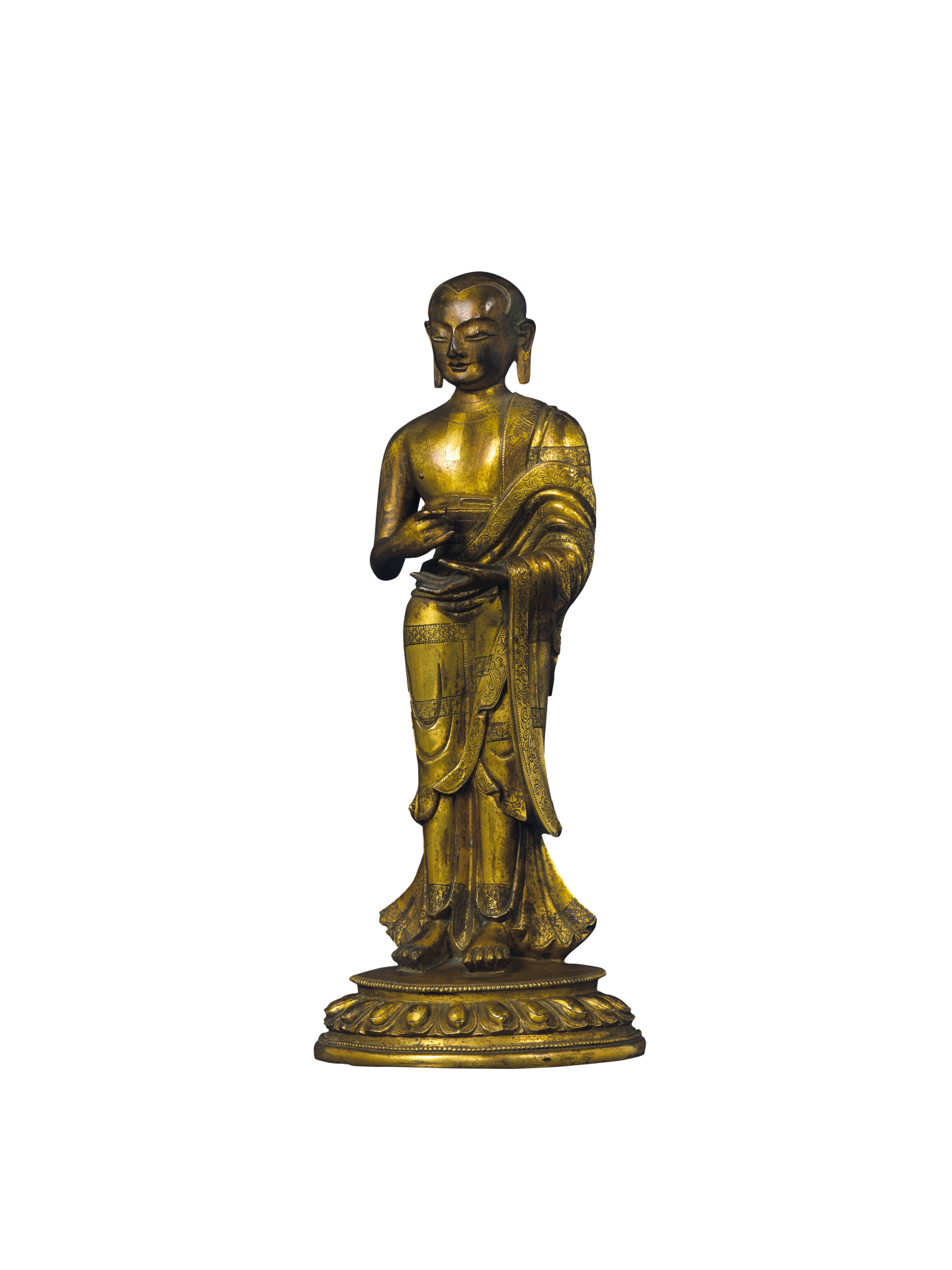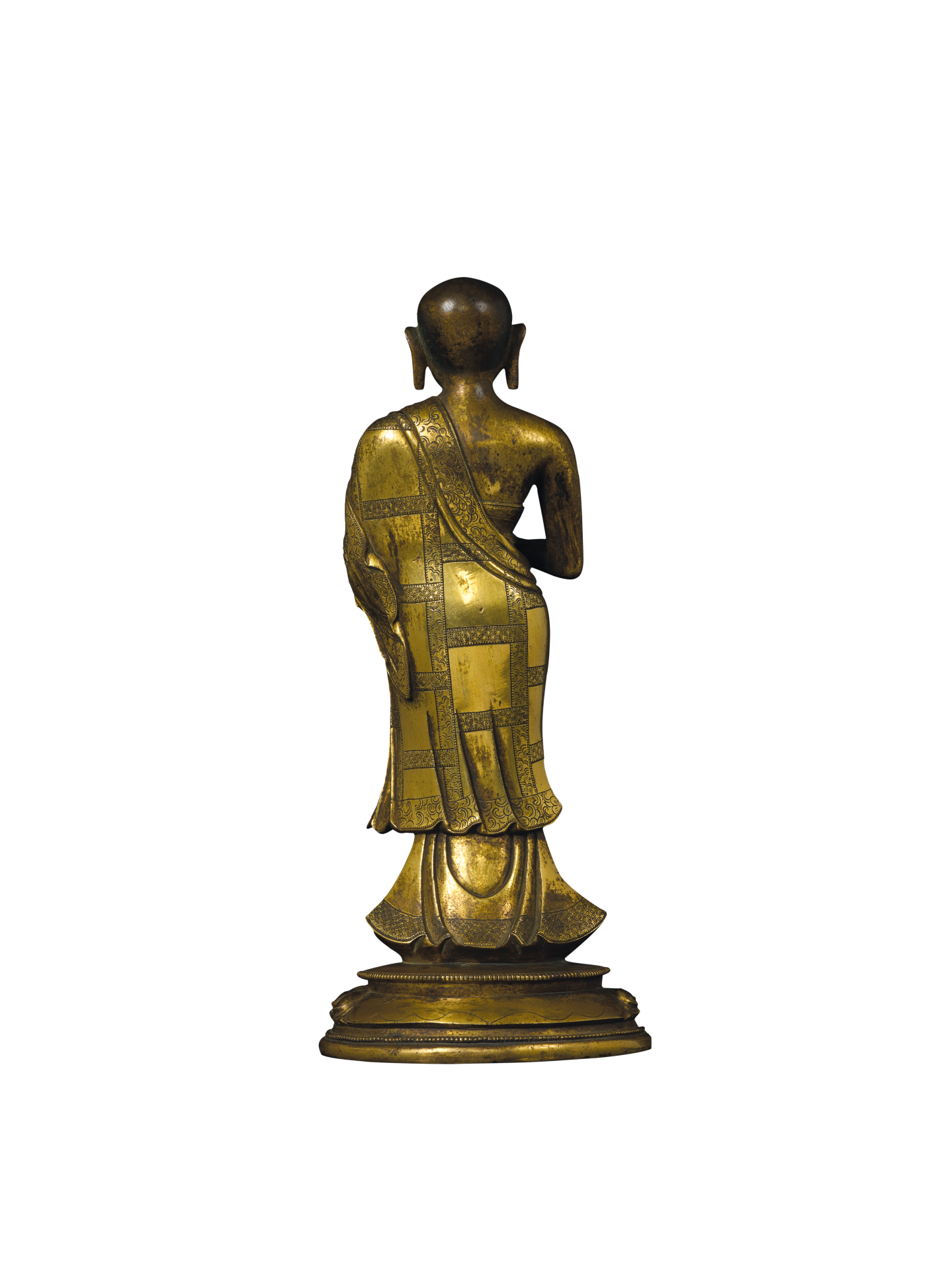Pair of Standing Śāriputra
Śāriputra was known as Foremost in Wisdom among Śākyamuni’s ten principal disciples. This pair of gilt bronze statues portrays Śāriputra wearing a kāṣāya exposing the right side of his body, and hands held in front of the chest. The perforation through the left palm suggests that an attribute was once there. According to Buddhist liturgy, Śāriputra holds an alms bowl in one hand and carries a ceremonial staff in the other. Both attributes are now missing.
The emperors of the Qing dynasty (1644-1911) were devout Buddhists. In the 36th year of his reign (1697), Emperor Kangxi (1654-1722) set up the Scripture Recitation Office in Zhongzheng Hall inside the Forbidden City. This Office also took up the responsibility of producing imperial Buddhist statuary, thus establishing the milestone for the production of imperial Buddhist statuary in the Qing court. Stylistically the Qing statuary still carry characteristics of their Ming predecessors as indicated by the plump face, delicate facial features, well-balanced bodily form, good proportion, splendid clothing with ornate borders chiselled with floral and foliage motifs, and sumptuous gilt with radiant brightness. Although these two statues of Śāriputra bear no reign mark, they conform stylistically to the imperial statuary of the Kangxi reign.
It is worth noting that, although the two statues share many similarities in their facial features, gesture, stance, the modelling of the thick solid chest, the style of the lower garment and the rendering of drapery; on closer examination, one will notice slight differences in their countenance, muscular representation and drapery treatment. This indicates that the two statues could have been produced by different artisans in the same atelier.
